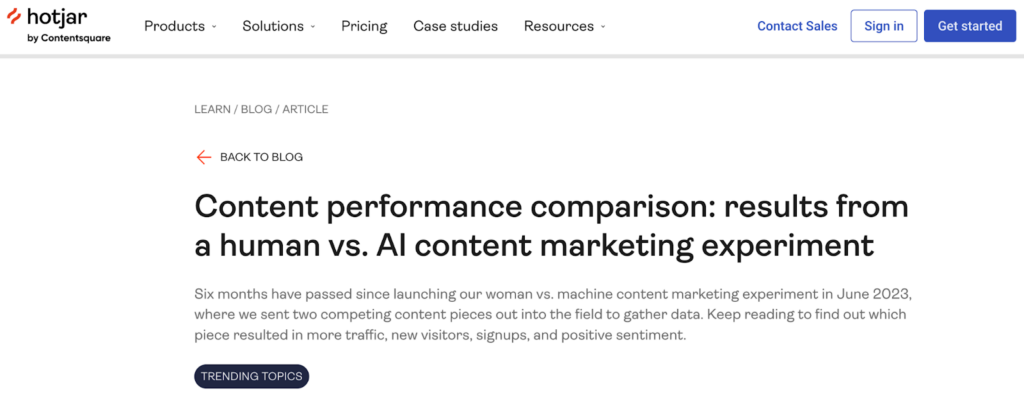Digital Marketing Strategy Examples & Ideas For 2025

No business worth its salt will thrive (or even survive in some cases) in 2025 without a well-planned, precisely executed digital marketing strategy.
If you’re not visible in the digital spaces your customers like to hang out in, you’re guaranteed to fall behind more forward-thinking competitors who are.
But how do you create a digital marketing strategy that generates brand awareness in all the right places and resonates with all the right people?
Fear not, Resident North is here with a rundown of the most effective digital marketing strategy ideas and examples to inspire you to take control of your online presence once and for all.
What Is A Digital Marketing Strategy?
A digital marketing strategy is a comprehensive plan outlining how a business intends to use online channels to achieve its specific marketing objectives. It involves leveraging digital platforms and tools to reach and engage target audiences, build brand awareness, and drive sales or other desired outcomes.
Key components of a digital marketing strategy typically include:
- Audience personas: Understanding the demographics, interests, and behaviours of the people you want to reach.
- Goals and objectives: Defining what you want to achieve through your digital marketing efforts (such as increasing website traffic, generating leads, or boosting sales).
- Channel selection: Choosing the most effective online platforms and tactics (for instance, social media, Search Engine Optimisation, content marketing, email marketing, paid advertising).
- Content creation: Developing high-quality content that resonates with your target audience and aligns with your brand.
- Measurement and analysis: Tracking key metrics to evaluate the success of your digital marketing initiatives and make data-driven adjustments.
How To Create A Digital Marketing Strategy
A well-crafted digital marketing strategy is essential for businesses to thrive in today’s digital age. Here are some tried-and-tested digital marketing strategy ideas to help you create your own:
- Define your goals and objectives: Be specific about what you want to achieve. For instance, do you want to increase website traffic, generate leads, boost sales, enhance brand awareness, or a combination of all these things? Once you’ve clarified your overall objectives, ensure your goals are SMART: Specific, Measurable, Achievable, Relevant, and Time-bound.
- Understand your target audience: Create detailed profiles of your ideal customers, including demographics, interests, behaviours, and pain points. Once you’ve fleshed out your audience personas, it’s a useful exercise to map out the various steps your target audience takes from awareness to purchase. This is known as the ‘Marketing Funnel’ in the business.
- Conduct a competitor analysis: It can be useful to conduct a competitor analysis to identify your competitors and analyse their digital marketing strategies. This can give you a strong sense of the tools and approaches that will work best for your business. As part of this process, you should also determine your unique selling points and how you can differentiate yourself.
- Audit your current digital presence: Assess your website’s design, content, and user experience (UX) to determine its current strengths and weaknesses. This can be useful for establishing where you need to concentrate your efforts. You should also take some time to review your social media channels and the level of engagement and activity they attract.
- Choose your digital marketing channels: Determine which channels align best with your target audience and goals. For example, would your business be best served by Search Engine Optimisation (SEO), social media, content marketing, email marketing, or paid advertising? Once you’ve figured out the best approach, you can then allocate your budget and resources.
- Create a content strategy: When it comes to strategising your content approach, plan your content topics, formats (blog posts, videos or infographics, for example), and publishing schedule. Once you’ve put in the groundwork, ensure that your content demonstrates Experience, Expertise, Authority and Trustworthiness (EEAT) and is written with people in mind.
- Set Key Performance Indicators (KPIs): When setting Key Performance Indicators (KPIs), define the most relevant metrics to track the success of your digital marketing efforts. For example, this might be website traffic, conversion rates, or social media engagement. Be sure to use tools like Google Analytics and inbuilt social media analytics to monitor performance.
- Implement and optimise: Having followed all the above steps, all that’s left to do now is to put your strategy into action and monitor the results. It’s a good idea to continuously analyse the data available to you and make any necessary adjustments to improve the performance of your various digital marketing channels. Remember, progress not perfection!
8 Digital Marketing Strategy Examples
1. Search Engine Optimisation (SEO)
Search Engine Optimisation (SEO) is the practice of improving a website’s visibility and ranking in search engine results pages (SERPs) like Google, Bing, or Yahoo. When someone searches for a specific keyword or phrase, SEO helps ensure your website appears higher in the organic search results.
Benefits of SEO:
- Increased organic traffic: SEO drives more targeted visitors to your website without the need to pay for advertising. This can lead to higher conversions and sales.
- Improved brand visibility: Ranking higher in search results can enhance your brand’s online visibility and reputation.
- Long-term ROI: Unlike paid advertising, SEO can provide a long-term return on investment as your website continues to rank well over time.
- Cost-effective marketing: SEO can be a more cost-effective marketing strategy compared to traditional advertising methods like TV or print.
- Enhanced user experience: SEO often involves improving your website’s structure and content, which can lead to a better user experience.
SEO Strategy Example – American Egg Board

The American Egg Board, which connects America’s egg farmers with consumers, was experiencing declining traffic and visibility in search engines.
Chicago-based digital agency, Rise, developed a site-wide keyword strategy and streamlined the site architecture. The result was a 22% increase in traffic with a whopping 87% increase on mobile.
2. Content Marketing
Content marketing is a strategic marketing approach that focuses on creating and distributing valuable, relevant, and consistent content to attract and retain a clearly defined audience, and ultimately drive profitable customer action.
Instead of interrupting potential customers with traditional advertising, content marketing attracts and engages customers with things they actually want to see, hear, and read.
Benefits of content marketing:
- Increased brand awareness: Consistent, high-quality content helps your brand stand out and be recognised by your target audience.
- Improved SEO: High-quality content can improve your website’s search engine ranking, making it easier for potential customers to find you online.
- Enhanced lead generation: Content marketing can attract potential customers to your website and encourage them to provide their contact information.
- Stronger customer relationships: By providing valuable content, you can build trust and loyalty with your audience.
- Increased sales: Ultimately, content marketing can drive sales by guiding potential customers through the buying journey.
Content Marketing Strategy Example – Hotjar

Website analytics experts Hotjar provide website owners with insights into user behaviour. Their ‘woman vs machine’ study into how two competing blogs written by a human and ChatGPT would perform provided fascinating insights while subtly promoting their heatmapping products. Spoiler alert: the human won!
3. Digital PR
Digital PR is a specialised form of public relations that leverages digital channels to build and maintain relationships with audiences. It involves strategically using online platforms and tactics to enhance a brand’s reputation, increase visibility, and drive traffic to a website.
Benefits of Digital PR:
- Increased online visibility: Digital PR can significantly boost your brand’s online presence by securing high-quality backlinks, mentions, and social media shares. This can improve search engine rankings and make your brand more discoverable to potential customers.
- Enhanced brand reputation: By building positive relationships with influential online figures and media outlets, digital PR can help establish your brand as a trusted authority in its industry. This can improve brand perception and customer loyalty.
- Targeted audience reach: Digital PR allows for more targeted outreach compared to traditional PR methods. By understanding the online behaviours and preferences of your target audience, you can tailor your campaigns to reach the right people at the right time.
- Measurable results: One of the key advantages of digital PR is the ability to track and measure its effectiveness. Tools like analytics can provide insights into website traffic, social media engagement, and other relevant metrics, allowing for data-driven decision-making.
- Cost-effective: Compared to traditional PR methods, digital PR can often be more cost-effective. By utilising online channels and tools, your business can reach a wider audience without the high costs associated with traditional media placements.
Digital PR Strategy Example – Uswitch

Uswitch created a digital PR campaign highlighting slow internet speeds across the UK. Their reimagining of the London Underground map highlighted that average WI-Fi speeds across the network were superior to those in millions of households. This generated widespread publicity and drove readers to use their switching services.
4. Pay-Per-Click (PPC)
PPC (Pay-Per-Click) is an online advertising model where advertisers pay a fee each time one of their ads is clicked. This means you only pay when someone expresses interest in your product or service by clicking on your ad.
Benefits of PPC:
- Targeted advertising: You can precisely target your ads to reach specific demographics, interests, and locations. This ensures your ads are seen by people most likely to be interested in what you offer.
- Measurable results: PPC provides detailed analytics and tracking, allowing you to measure the effectiveness of your campaigns. You can track metrics like clicks, impressions, conversions, and cost per acquisition (CPA).
- Fast(er) results: PPC campaigns can be up and running quickly, allowing you to start generating leads and sales almost immediately.
- Flexibility: You can easily adjust your PPC campaigns based on performance. If a particular ad or keyword isn’t performing well, you can make changes to improve its effectiveness.
- Scalability: PPC allows you to scale your advertising efforts up or down as needed. You can increase your budget to reach a larger audience or decrease it to reduce costs.
PPC Strategy Example – The Google Job Experiment
Banking on the fact that everyone, including ad execs, loves to Google themselves, job-seeking marketer Alec Brownstein bid on the names of five creative directors from leading New York ad agencies. His attention-grabbing ads won him four interviews, two job offers and a whole lot of plaudits all for the princely sum of just $6!
5. Google Shopping
Google Merchant Center is a platform that allows online retailers to upload their product data to Google. This data is then used to display your products in Google Shopping, Google Search, and other Google properties.
Benefits of Google Shopping:
- Increased visibility: By listing your products on Google Shopping, you can significantly increase your visibility to potential customers.
- Targeted advertising: You can use Google Ads to target specific keywords and demographics, ensuring that your products appear in front of the right audience.
- Product showcase ads: Google Merchant Center enables you to create visually appealing product showcase ads that can capture attention and drive sales.
- Local inventory ads: If you have physical stores, local inventory ads can help you attract customers who are searching for your products nearby.
- Data insights: Google Merchant Center provides valuable data insights, such as product performance, customer behaviour, and campaign effectiveness.
- Improved SEO: By optimising your product data for Google Shopping, you can also improve your website’s SEO.
Google Shopping Strategy Example – Moon Juice

Wellness brand Moon Juice developed a Google Shopping campaign that combined logical titles, beautiful product imagery, and customer reviews to increase click-through rates (CTR).
The direct result of all their efforts was a 184% increase in purchases and a 164% increase in revenue. That’s a very healthy return for doing the basics right.
6. Paid Social
Paid Social is a form of digital advertising that involves paid promotion on social media platforms like Facebook, Instagram, Twitter, LinkedIn, and Pinterest.
Unlike organic social media posts, paid social ads allow businesses to target specific audiences based on demographics, interests, behaviours, and other factors.
Benefits of Paid Social:
- Targeted reach: You can precisely target your desired audience, increasing the likelihood that your ad will be seen by people who are interested in your product or service.
- Measurable results: Paid social platforms provide detailed analytics, allowing you to track metrics like impressions, clicks, conversions, and return on investment (ROI).
- Brand awareness: Paid social ads can help increase brand visibility and recognition among your target audience.
- Lead generation: By running targeted campaigns, you can generate leads and drive traffic to your website.
- Sales: Paid social ads can directly contribute to sales by encouraging users to make purchases.
- Engagement: Paid social ads can foster engagement with your brand through likes, comments, shares, and clicks.
Paid Social Strategy Example – Dove
Skincare brand Dove partnered with Getty and Girlgaze to develop Project #ShowUs. Together, they set out to break down beauty stereotypes by creating a library of 14,000+ photographs portraying female-identifying and non-binary individuals as they are. In the process, they managed to generate huge engagement on social channels.
7. Branding
Branding is the process of creating a unique identity for a product, service, or company. It involves developing a strong and recognisable brand name, logo, tagline, and overall visual identity.
Benefits of branding:
- Increased brand recognition: A strong brand is easily recognisable and memorable to customers.
- Customer loyalty: A positive brand experience can lead to repeat business and customer loyalty.
- Enhanced brand reputation: A well-established brand often has a positive reputation that can attract new customers.
- Differentiation: Branding helps a product or service stand out from competitors.
- Higher perceived value: Consumers may perceive branded products as being of higher quality or worth more.
- Increased sales: A strong brand can drive sales and revenue.
Branding Strategy Example – Old Spice
Thanks to a viral video and a clever rebrand, Old Spice turned its reputation from an ailing male grooming company popular with your dad into a cool, relevant brand again.
Their School of Swagger, a platform committed to ensuring no student drops out of high school, is a great example of their authentic mission to boost men’s confidence.
8. Web Design
Web design is the process of creating websites. It involves planning, designing, and coding the structure, content, and layout of a website to achieve specific goals.
Web designers use a variety of tools and techniques to create visually appealing, user-friendly, and functional websites that showcase a brand’s wares online.
Benefits of web design:
- Enhanced online presence: A well-designed website can significantly improve your online presence and make your business more visible to potential customers.
- Improved user experience: A user-friendly website can enhance the overall experience for visitors, making them more likely to stay on your site and take desired actions, such as making a purchase or filling out a contact form.
- Increased credibility: A professional and visually appealing website can help establish credibility and trust with your audience.
- Better search engine rankings: A website that’s optimised for search engines (SEO) can improve its visibility in search results, driving more traffic to your site.
- Effective communication: A well-designed website can effectively communicate your brand message and convey the value you offer to your customers.
- Increased sales and conversions: A website that’s designed to convert visitors into customers can help increase sales and revenue.
- Streamlined operations: A well-organised and functional website can streamline internal operations and make it easier for employees to access information and resources.
- Competitive advantage: A website that’s better designed and more user-friendly than your competitors’ sites can give you a competitive advantage in your industry.
- Improved brand recognition: A consistent and memorable website design can help improve brand recognition and recall.
- Greater flexibility: A well-designed website can be easily updated and maintained to adapt to changing needs and trends.
Web Design Strategy Example – Audemars Piguet

When you’re selling luxury products, you need a website that perfectly demonstrates your company’s values and aesthetic.
High-end Swiss watchmaker Audemars Piguet achieved this feat by creating a smooth, responsive, visually dramatic website that looks and feels every bit as precise and luxurious as their timepieces.
Ready To Create Your Own Digital Marketing Strategy?
Feeling inspired? Ready to create a winning digital marketing strategy? Resident North’s dedicated team of marketing experts is here to support the growth and success of your brand with impactful digital marketing strategy ideas and campaigns that are designed around your specific needs and business objectives.

Linzi Hunter
Creative Director

